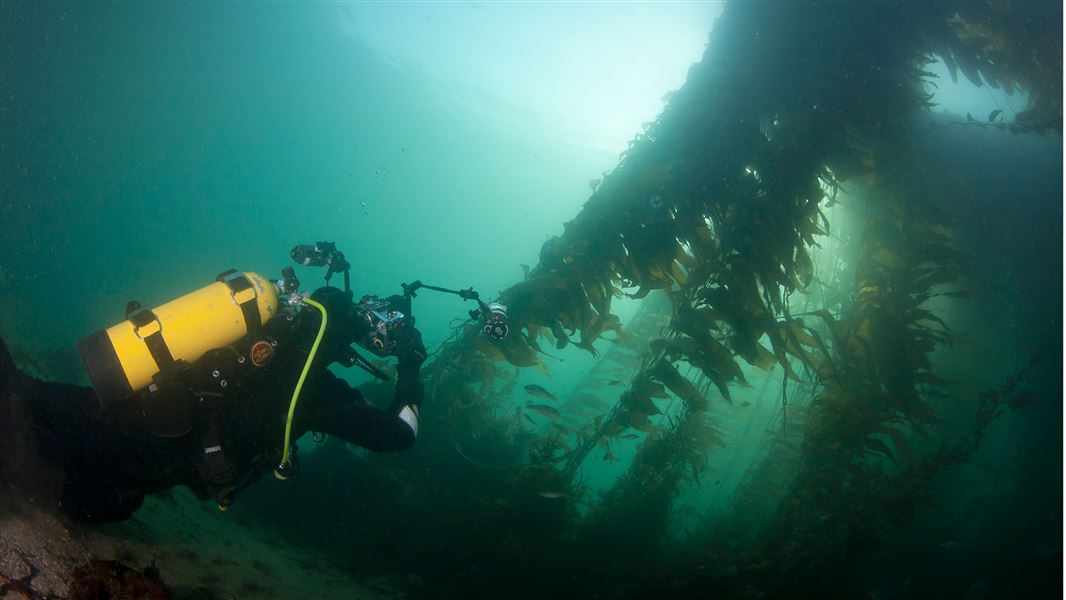Ulva Island-Te Wharawhara Marine Reserve was established in 2004 and is 1,075 hectares.
Image gallery
Ulva Island-Te Wharawhara Marine Reserve is located in the outer portion of Paterson Inlet, on Stewart Island/Rakiura’s east coast.
- No fishing or taking or disturbing anything found naturally in the reserve.
- No feeding fish because it disturbs their natural feeding behaviour.
- No discharging of any pollutants or ballast water in the reserve
- No introducing of living organisms to the reserve
Te Whaka a Te Wera/Paterson Inlet Mataitai Reserve
The marine reserve is surrounded by Te Whaka a Te Wera/Paterson Inlet Mataitai Reserve. Mataitai reserve prohibits commercial fishing and manages fisheries levels to ensure the sustainability of this important Maori fishing and food gathering area.
Predator free
Ulva Island is an open predator free sanctuary. If you are planning to access the island through the reserve, check that your vessel is pest free and that your clothes and footwear are clean to reduce the likelihood of introducing invasive species.
Paterson Inlet/Whaka ā Te Wera is a shallow bay. Once an ancient river valley now filled with water, is one of the largest sheltered harbours in southern New Zealand.
The rivers flowing into it come from clean, undeveloped land, carrying little sediment or nutrient runoff. This keeps the inlet waters clear and supports a wide variety of plants and animals.
Paterson Inlet is an important habitat and nursery for at least 56 species of marine fish. The mix of warm and cool waters around Stewart Island/Rakiura creates an environment that attracts a variety of species.
Brachiopods
The inlet is also home to brachiopods, ancient filter-feeding shellfish, that live on rocks and sediment at depths of less than 20 meters. This makes it one of the richest and most accessible places for brachiopods in the world. Brachiopods were very common in prehistoric oceans 300 to 550 million years ago but are rare today.
Seaweed
Stewart Island/Rakiura has more types of seaweed than anywhere else in New Zealand, and Paterson Inlet is home to 70% of them, including 56 brown, 31 green, and 174 red species. Small red seaweed meadows grow on the sand, helping to stabilize the sediment and providing shelter for scallops and surfaces for young scallops to settle on.
Report illegal or suspicious activity
Don't take, disturb, kill or damage anything within the reserve - it's illegal. If you see people taking anything from the reserve, report the activity as soon as possible.
You can call 0800 4 POACHER (0800 476 224) or 0800 DOCHOT (0800 362 468).
It is also an offence to pollute or litter the reserve, discharge any firearm in or into the reserve or erect any structure in the reserve.
Reporting pests
Find-A-Pest lets you report potential pest species, including marine, plant, animal and fungal species.
If you come across something out of the ordinary, upload a picture to the app and a specialist will help identify it. If it's a biosecurity threat, this will be forwarded to Biosecurity New Zealand. If possible, take photos and record the location and name of the vessel.
Or call the Ministry for Primary Industries' Pest and Diseases hotline on 0800 80 99 66.
Protect our marine reserves
- No fishing of any kind.
- Don't take or kill marine life.
- Don't remove or disturb any marine life or materials.
- Don't feed fish - it disturbs their natural behaviour.
- Take care when anchoring to avoid damaging the sea floor.
Rakiura National Park Visitor Centre
| Phone: | +64 3 219 0009 |
| Email: | stewartisland@doc.govt.nz |
| Address: | 15 Main Road Oban 9818 |
| Hours: | Visitor centre hours and services |
